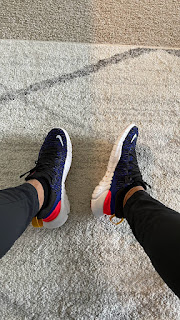Beyond Training: Unveiling the Secrets Behind My Best 10K Timing
I recently completed a 10k outdoor run with a timing (56:38) that came "almost" close to my personal best. While it may not be considered a remarkable timing in the runners' community, I don't consider myself a dedicated runner. Running is something I do recreationally. However, what's intriguing about this achievement is that I hadn't specifically trained for a 10k; in fact I barely ran a 10K in last one year. It prompted me to delve deeper into the factors that contributed to my improved performance. In this blog post, I'll share the insights and discoveries I made about the elements beyond training that played a significant role in my accomplishment.
Diet: Fueling the Machine
While I had completed several 10ks before, I found myself on the brink of giving up long-distance running due to the disappointment of my second 21km timing, which was worse than the previous year. In hindsight, I realized that my running ability alone wasn't solely responsible for this decline. The missing piece of the puzzle turned out to be my diet. I had underestimated the connection between good nutrition and running performance. Simply relying on physical fitness from gym workouts was not enough for long-distance running. Over the past year, I embarked on a journey to understand proper nutrition and gradually incorporated it into my routine. In the days leading up to the run, I focused on consuming a diet rich in high-fiber vegetables, proteins, and healthy fats. I consciously avoided outside food, processed food, and deep-fried items. It was not some crazy diet but a simple Indian meal at home, where I was conscious about the macros (fat, protein, carbs) I consumed. This change had a positive impact on my performance, even though I lacked concrete data to prove it.Strength Training: Building a Strong Foundation
Posture: Embracing the Natural
Inspired by the Tarahumara people, renowned natural runners who prefer running barefoot, I delved into the importance of posture and footwear. Previously, I had invested in highly cushioned and expensive running shoes, unaware of their impact on my running form. However, after reading the book "Born to Run," I decided to make a change. I transitioned to flat shoes, paying extra attention to avoid injuries. Flat shoes are way cheaper and naturally aligned with human feet shape. This shift in footwear significantly improved my running posture. Additionally, I simplified my breathing, following the Tarahumara approach of nasal breathing instead of hard mouth breathing. These adjustments optimized my running efficiency and contributed to my improved performance.
A Holistic Approach to Performance
In conclusion, while training remains a vital aspect of running, my experience has highlighted the significance of other factors in enhancing performance. A healthy diet provides the necessary fuel for the body to perform at its best, while strength training builds a strong foundation that reduces strain and improves stability. Attention to posture and footwear ensures better alignment and minimizes the risk of injuries.
It's important to remember that these factors are not substitutes for training but valuable additions to the training routine. If you're a beginner, focus on gradually increasing your distance rather than fixating on specific timings. As you progress, consider incorporating elements such as a healthy diet, strength training, and attention to posture into your regimen to optimize your running experience and performance.
Running is a personal journey, and what works best for one person may differ for another. Embrace the holistic approach, listen to your body and most importantly enjoy the process.







Nice 👍
ReplyDeleteAmazing !!
ReplyDelete